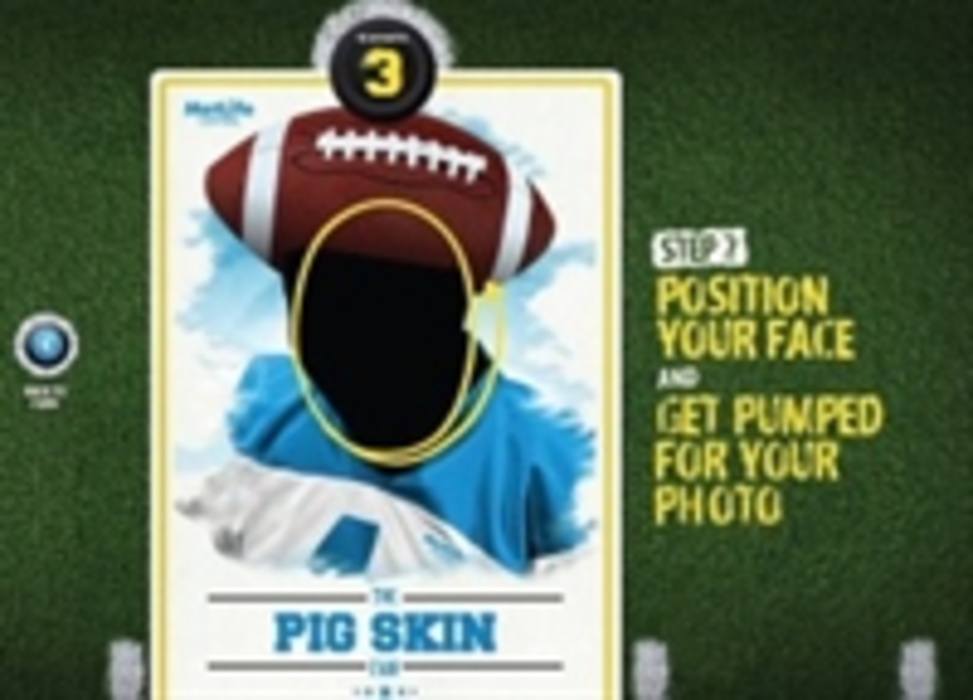Client: MetLife?
Agency: SapientNitro?
Outtake: Life insurance provider enhances the Meadowlands experience for New York Giants and Jets fans with an interactive program, while making its brand more approachable.?
MetLife deployed a fan engagement program at the New Meadowlands Stadium in East Rutherford, N.J., for New York Giants and Jets fans in an effort to make its brand more approachable and reshape the perception that life insurance companies are intimidating.?
The company developed an interactive program built on the premise of “democraticizing the fan experience,” said Jeffrey Damon, VP of corporate creative services at MetLife.?
The program, MetLife Central, spanned 18 home games of the New York Giants and Jets from August 2010 to January 2011. It featured various fan activities on the four levels of the football stadium from the plaza to the third tier. ?
STRATEGY: MetLife turned to SapientNitro, which had worked on its website in 2008, to create MetLife Central as an interactive in-stadium experience, as well as a microsite to continue the conversation. ?
From pregame to halftime, fans were able to participate in technology-based interactive activities such as green screen photographs and a fourth quarter countdown sweepstakes game modeled after the Zoltar fortune teller machine from the 1988 film Big. ?
Additional activities included photos with Snoopy, team alumni autograph signing and crowd contests. Fans were able to retrieve their photographs from the photo marketing stations on the microsite, MetLifeCentral.com. SapientNitro designed a countdown card with laser swipe technology, requiring five data points ?including first name, last name, email address, telephone number and ZIP code. Whenever fans swiped the card for activities, they also became eligible for additional prizes. ?
Complying with NFL regulations, MetLife restricted larger prizes to fans that lived within a 75-mile radius of the Meadowlands. Fans were able to use the countdown card multiple times throughout the game, as well as during the season, both at the stadium and online. ?
“We gave away 300 split second prizes and 12 big time prizes every game. Those were things that fans couldn’t really get on their own,” said Damon.?
The “big time” prizes included access to the field pre-game, flag and football tournaments held at Giants and Jets training facilities, autographed merchandise and meet-and-greet sessions with favorite team alumni. Smaller prizes included Giants and Jets blankets and Snoopy plush dolls. ?
A team of MetLife Central representatives with handheld tablets circulated the stadium and signed up fans for the countdown card each game. Fans also signed up for the card using fixed mechanisms stationed throughout the Meadowlands. “The whole idea was not to be interruptive to the fan experience, but to be able to let them sign up quickly, use it in multiple places, and get back to what they came to do – ?enjoy the game,” said Damon. ?
RESULTS: During the NFL season, approximately 27,000 people signed up for the countdown card. Of those, 6,000 used the card for more than one game. In addition, the life insurance company gave away 5,700 prizes.?
MetLife sent three emails during the season to remind fans of the program’s prizes and upcoming events. It culled emails from those who opted in via the countdown cards. The program’s opt-in rate exceeded 60%. ?
“Being an insurance company, there are serious rules about what we can and cannot communicate to customers,” Damon said. “We were very conscious to draw a line between the sports promotion of what we were doing and our business. We didn’t use it to solicit ?for business.”?
“We had more people sign up more quickly than we had anticipated,” said FK Funderburke, director of digital merchandising and mobile strategy at SapientNitro. “Traffic to the microsite was greater at a very earlier point than we thought it was going to be.”?
However, Damon admitted that the numbers related to its microsite and social media efforts were low. Instead, the brand spent more time on the stadium aspect. MetLife Central drove 23,000 fans to its microsite, but only acquired 700 fans and followers on Facebook and Twitter. ?
It plans to expand the program in 2011 by driving more traffic to its microsite and establishing a larger presence on Facebook and Twitter.?
“We were generally pleased with the results,” Damon said. “It gave us a lot of opportunity to build on something new for upcoming seasons.”







